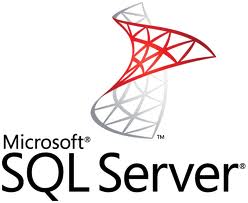Need of Programming Language, Source Code, Object code, C++ Compiler, Preprocessor, Linker, Using Turbo C++ Compiler
C++ Character Set, Tokens, Keywords, Identifiers, Literals, Integer
constants, Character constants, Floating constants, Strings constants,
Escape Sequence, Punctuators, Operators
Basic data types, Variables, Input/Output (I/O), Type conversion, type casting, Constants, Structure of C++ Program, Comments
Arithmetical operators, Relational operators, Logical operators,
Unary operators, Assignment operator, Compound Assignment Operators,
Conditional operator
Conditional Statements, if statement, if else , nested if,
switch statement, Looping statement, while loop, do-while loop, for
loop, Jump Statements, goto, break, continue
#Include Directive, Mathematical Functions, Character Functions, String
Functions, Console I/O functions, General purpose standard library
functions, Some More Functions
Prototyping, defining and calling a function, actual parameters and
formal parameters, return type of a function, call by value, call by
reference, inline function, default argument, global variable local
variable
Declaration, Initialization of 1-D Array, Referring to array elements,
using loop to input array from user, array as Parameter, traverse, Read,
Linear Search, Binary Search, Bubble, Insertion Sort, Selection Sort,
Merge
Declaration, Initializing, Reading strings, Printing strings, cin,
gets(), cout, puts() counting number of characters in string, count
number of words, length of string, copy contents of string, concatenate,
compare string
read a 2-D array, display content of a 2-D array, sum of two 2-D
arrays, multiply two 2-D arrays, sum of rows & sum of columns of 2-D
array, sum of diagonal elements of square matrix, transpose of a 2-D
array
Defining a structure, Declaring Variables of Type struct, Accessing of
its data members, Initialization of structure variable,Nested structure,
typedef, Enumerated data type, #define, Macros
Procedural Paradigm, Object Oriented programming, Object, Class, Data
Abstraction, Encapsulation, Modularity, Advantages of Object oriented
programming
Classes and Objects, declaring a class, private members, protected members, public members, Example of a class
Constructor, Types of Constructor, Default Constructor,
Para-meterized Constructor Copy Constructor, Constructor overloading,
Destructor
Inheritance, Base Class, Derived Class, Single Inheritance, Multiple,
Hierarchical, Multilevel and Hybrid Inheritance, Visibility Mode,
Containership, Overriding of function in inheritance, Virtual Base Class
File, Stream, Text file, Binary file, ofstream, ifstream, fstream class,
Opening a file, Closing file, Input and output operation, File pointer
and their manipulation
Program to write, read, display, count number of characters, words,lines
in text file. In binary file write, display records, search, delete and
modify a record
C++ Memory Map, Defining Pointer Variable, Pointer Arithmetics,
Pointers and Arrays, Pointers and strings, Pointers to Structures,
Dynamic memory, Memory Leak, Self Referential Structure
Stack as an Array, Defining member function PUSH() - to push data to the stack, POP() - to remove data from the stack.
Array implemented circular queue containing data values, function to insert and delete data from the queue
Defining structure of node for the linked stack, Defining member
function PUSH() - to push a node to the stack which is allocated
dynamically, POP() - to remove a node from the stack and release the
memory.
linked list implemented queue containing data values, function to insert and delete a number from the queue









































